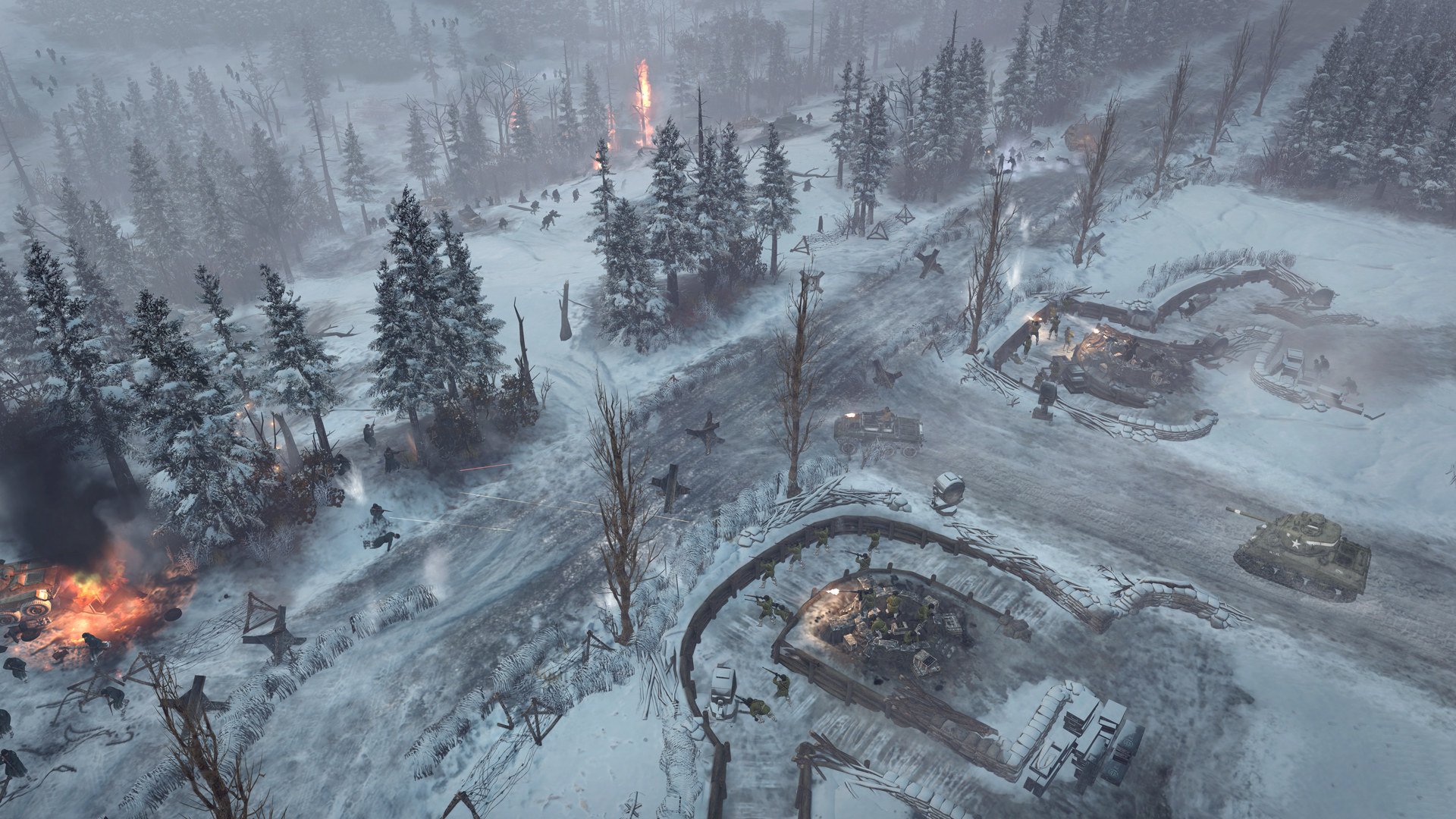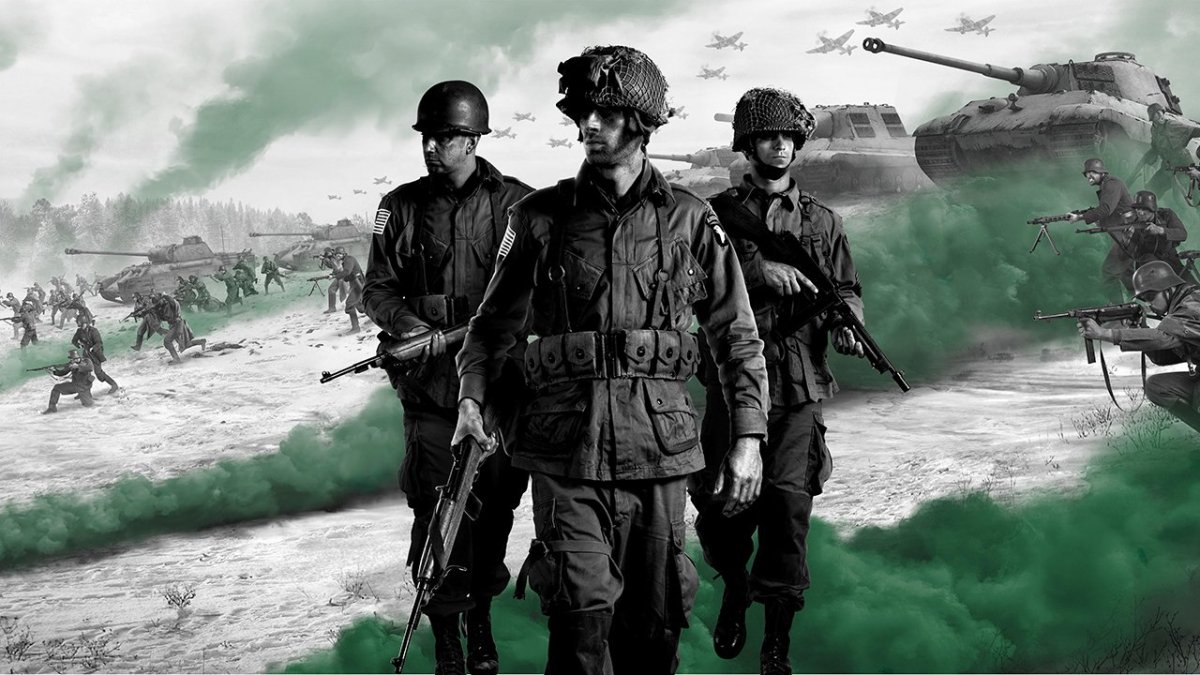Replayability. One of the key things that Relic Entertainment and SEGA has been trumpeting about this upcoming standalone expansion is its replayability. Which is kind of weird, because whenever anyone thinks about games with good replay value, they instinctively think to games with fun, multiplayer experiences and not a completely singleplayer (so no multiplayer or co-op at all) campaign, which is what Company of Heroes 2: Ardennes Assault is. In Company of Heroes 2: Ardennes Assault, you will be playing through a campaign that is set in the midst of the Battle of the Bulge, one of the defining battles of World War 2.
A fair amount of skepticism will be initially had with Ardennes Assault, especially when one looks at the hefty starting price of $39.99. However, once you decide to take the plunge, you will find that the game isn’t quite the way you had imagined. In a good way. If you were picturing a campaign not too dissimilar to the default Company of Heroes 2 campaign where you followed a linear historical, although not necessarily factual, story and played scenario after scenario that was just given to you, then you will be pleasantly surprised to find that Relic Entertainment has made the campaign “dynamic.”

That’s right, there is now a campaign map where you are in charge of what happens next, not a predetermined list of scenarios or something as irritating as history. And that isn’t a put-down on Company of Heroes 2: Ardennes Assault. A part of what makes strategy games like the Total Wars and the oft forgotten campaign mode of the Wargame series popular is the ability for the player to write their own version of history. To see if you can make better decisions than Erwin Rommel or, I suppose in this US only campaign, George S. Patton.
Now it might look like the campaign map is just a fancy way for you to jumble around the order of the missions and scenarios you will be playing, but there are just so many factors that are going to impact your decision that makes such an assumption erroneous. You will be controlling three different companies, that you pick before starting your campaign, comprising of either Mechanized, Support, Airborne or Rangers (free if you pre-order). All four have varying play-styles that you will take into account their advantages and disadvantages as you decide which one would be best suited to attacking Stavelot.
When you click on a potential mission, you can read up on intel about the mission, such as the kind of forces you will be facing, their veterancy and the equipment at their disposal, your objectives and potential roadblocks you might run into, in the metaphorical sense such as resource limitations or in the literal sense such as the map being covered in tank traps. This will affect your choice on what division to throw at it because, for example, you wouldn’t want to throw your mechanized divisions at a map filled with tank traps.

Your companies will also have a different meaning other than “oh, here are some special units and abilities that only this company has access to.” You will be able to upgrade their special abilities with requisition points (which you will gain as you beat missions) such as making the abilities cheaper to use, automatically giving assault engineers flamethrowers when they spawn or making artillery barrages more devastating. In addition to this, as you use a company to fight more battles with, the company will gain experience points and, just like your units in-battle, will gain stars or “promotions” that will benefit the company in multiple ways, including more starting units and units starting with initial experience.
Now, this doesn’t mean you should dump all your requisition points to make a super company and then use said super company to fight all your missions. Every time a unit is completely destroyed in battle, the total health of the company drops. Every time you move through enemy held territory, you lose company health. Random events can also remove company health. Eventually, if you insist on using the same company over and over again and not giving it a break to reinforce, the company health will fall to zero and you will lose your company, leaving you with two, completely rookie companies and, more than likely, very tough missions that your greenhorn companies are ill-equipped to handle.

The enemy, whose strength in a region is represented by the little red iron crosses, in the campaign isn’t quite as dynamic as enemies are in the campaigns of the other strategy games I’ve mentioned. They basically don’t move from their positions until you flush them out, whereby they will retreat to neighboring regions and either get destroyed when they enter a region under your control or reinforce a region under enemy control. This leads to a bit of tactical thinking as you can seen what enemy reinforcements will do to a mission. While a mission may initially be a push-over, as they get reinforced, you will find they will gain more and more support and veterancy to the point where you will be greatly challenged when you eventually run at them.
The Germans also never attack a region that you own, so once you get it, it’s yours for good. This leads to 18 distinct missions played on maps that contain as much variance as a relatively small portion of Belgian countryside would allow, with varying objectives and bonus objectives where, through the first playthrough, assuming you don’t lose once, you can easily drop about ten hours worth of gameplay. Add in the other playthroughs where you tackle different missions in different order, different campaign difficulties and different combinations of special ability upgrades and you can start seeing the value coming back, especially if you went out and got yourself the ranger company from pre-ordering (or with more money!).

The base gameplay of Company of Heroes 2: Ardennes Assault isn’t too different from vanilla Company of Heroes 2, of which you can read our review of here, as you would expect of an expansion pack. The main differences are that you will be using the US forces, which you would be familiar with if you had bought and played the Western Armies multiplayer expansion, and that you can’t just mass units and rush them at defenses incurring great losses for land as you may have done before, because losses actually matter, which will force you to be more methodical and tactically sound.
Throughout the game, you are supposed to get attached to and personalize your companies and the game does a decent job of it giving you a semblance of a story with the captains of each being the “main characters” and you will get to know their personalities and their thoughts after missions as they send a letter home to their dad or write an after-action report for battalion. The story element is definitely a side-show and easily skipped, but it definitely helps you get immersed if you are willing to listen to the well crafted recordings and briefing videos.
Ardennes Assault is a step in the right direction for the Company of Heroes series, and while there is still a place for the story-driven, linear campaigns of old, there will also be room for more dynamic campaigns and, hopefully, future expansions and iterations will continue the progress started here with ideas such as persisting units (an infantry unit you use in one mission being called back in a later mission) and non-static opponents on the campaign map.
The Verdict
Company of Heroes 2: Ardennes Assault doesn’t completely shake up the whole Company of Heroes formula and turn it on its head, but instead, just like Company of Heroes 2 did to the original, it tweaks and alters the features of the core game for the better with things like the dynamic campaign map and losses actually counting for something, other than a statistic, that adds another layer of tactics and strategy into the fold. It’s a bit pricey, but you will get many hours of strategic and tactical fun from this standalone expansion as you push the Germans out of the Ardennes.











Published: Nov 17, 2014 10:00 am